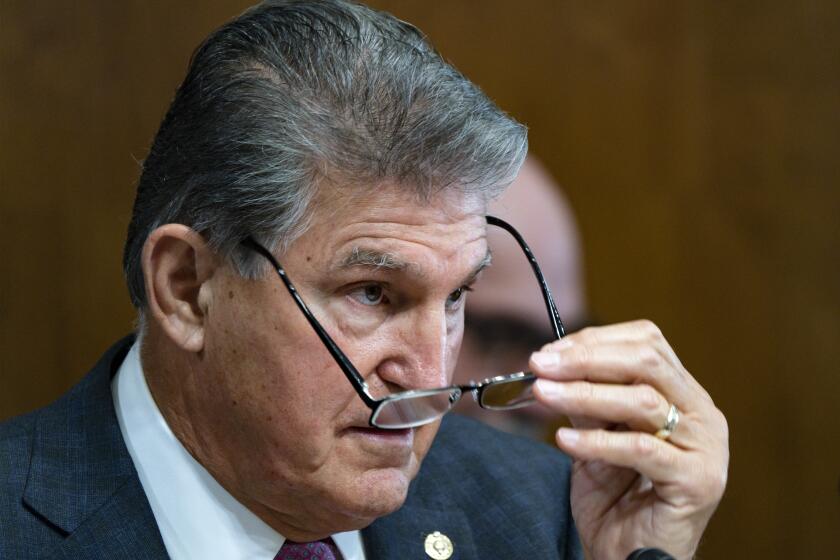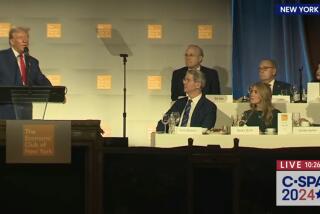What to know about the paid family and sick leave axed from Democrats’ spending bill

- Share via
WASHINGTON — After months of negotiations, President Biden last week unveiled the framework of the $1.85-trillion spending bill that would address climate change and expand the nation’s social safety net.
The measure would mandate tax credits for electric vehicles, make pre-kindergarten universal and extend the child tax credit by one year. The new framework, however, is a drastically scaled-back version of Democrats’ more ambitious $3.5-trillion proposal.
For example, the framework does not include provisions that would provide access to paid family and sick leave, a core component of a package many Democrats had hoped to tout on the 2022 campaign trail.
Here’s what you need to know about why such a popular policy vanished from the framework:
What was initially proposed?
Many Democrats wanted to give new parents, as well as those caring for elderly relatives or loved ones battling medical conditions, 12 weeks of paid leave from their jobs.
This failed, however, because Sen. Joe Manchin III of West Virginia, a key moderate Democrat, did not support its inclusion in the package.
Paid family and medical leave provisions are expected to be removed from Democrats’ Build Back Better bill.
Why won’t it be in the bill?
Most bills need a supermajority of 60 votes in the Senate to reach the floor for a vote and ultimately pass the chamber. To avoid a certain Republican filibuster, Democrats are using a process known as reconciliation. It requires a simple majority to pass legislation directly tied to the budget. The Senate, however, is evenly divided, and Democrats must be in lockstep to advance any such measure to ensure Vice President Kamala Harris can vote to break the tie.
Manchin was apprehensive about the initial $3.5-trillion price tag and negotiated with Biden to cut the cost. Paid leave was among the provisions nixed from the package to bring down the cost and ensure his support. Manchin also opposed establishing any new government programs.
Can the provision can be revived?
Senate Democrats vowed to press Manchin to support the provision, including proposing revisions to make the program shorter or to apply to fewer life scenarios. But unless he changes his mind, it will likely not be included in this package.
Before leaving to meet with Pope Francis in Vatican City on Thursday ahead of a pair of European summits, Biden said months were spent negotiating the package and “no one got everything they wanted, including me.”
“But that’s what compromise is. That’s consensus. And that’s what I ran on,” he said.
What does this mean for workers?
Right now, the status quo.
A majority of workers do have access to unpaid leave, thanks to the 1993 Family and Medical Leave Act. This legislation, however, excludes many part-time workers and smaller employers. Nearly 45% of workers are not eligible for such leave, according to the Center on Budget and Policy Priorities, a progressive Washington-based think tank.
Private employers can voluntarily give workers paid parental leave. As of March 2021, just 23% of private-sector workers had access to such a benefit, according to federal statistics. Paid sick leave was available to 77% of private-sector workers.
Only nine states and the District of Columbia mandate that employers provide paid family and sick leave. The length of such leaves vary. California workers, for example, get up to eight weeks of paid family leave and a year of medical leave annually; Rhode Island workers, meanwhile, get up to four weeks of family leave and 30 weeks of medical leave.
More to Read
Get the L.A. Times Politics newsletter
Deeply reported insights into legislation, politics and policy from Sacramento, Washington and beyond. In your inbox three times per week.
You may occasionally receive promotional content from the Los Angeles Times.












